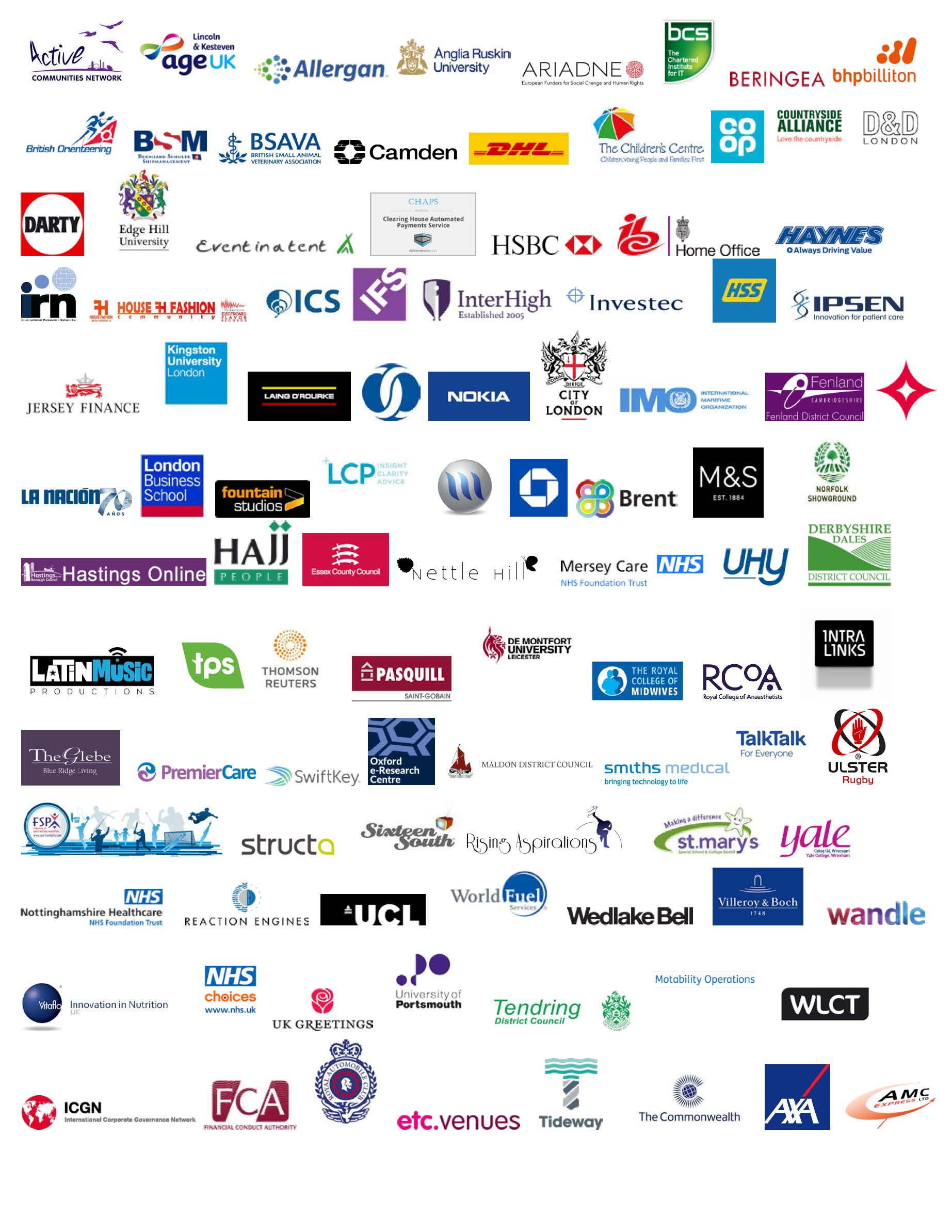Diploma in Financial Services via Online Distance Learning
Benefiting from over 30 years’ practical skills training experience, Fitzwilliam Institute’s Online Diploma in Financial Services course features:
- Comprehensive modules covering all aspects of financial services: Introduction to Financial Services, The Changing Financial Services Sector, Lending Practices, Deposit and Non Deposit Related Financial Services, Insurance, Investment Banking & Capital, Managing Risk: Changing Interest Rates, Fraud Protection, Macroeconomics, Microeconomics, Marketing Financial Services and many more.
- Interactive course expert support, advice and guidance from leading industry professionals. Always ready to help and answer any questions you might have throughout the course, all of our financial services course experts are top industry professionals with many years of successful experience. This online course contains the core and vital industry key skillset and, on completion, all of our students are industry-ready.
- Real life financial services briefs. Fitzwilliam Institute’s Diploma in Financial Services offers practical and specific skills that can be applied in real world situations. You will gain exposure to invaluable toolkits and prepare a real life financial services brief, which will enable you to improve your work portfolio.
- Flexible online learning. Fitzwilliam Institute’s Diploma in Financial Services course can be completed in your own time, from the comfort of your own home, to suit your lifestyle. You will have full access to online resources and subject expert support for 6 months. However, you can complete the course in as little as 3 - 4 months, by dedicating 6-8 hours of study per week.
- Financial Services Jobs, Networking and Volunteer Opportunities. Benefiting from many years of industry experience, Fitzwilliam Institute are extremely well placed within the industry. Employers are always looking for Fitzwilliam Institute’s students and alumni. Our website features a comprehensive jobs and volunteer opportunities section.
Introduction to Financial Services
What are financial services; The financial services industry; Types of financial services; Roles of the financial system; Functions of financial services; Financial institutions; Changes in the financial service sector; Trends within the financial service; Professional bodies; The financial services consumer;
The Changing Financial Services Sector
Types of financial organizations governing the industry; Size and structure of financial service providers; The commercial banking industry; Small and large banks; Unit banks, branching, financial holding companies (FHC); Organizational structure of International banks; Financial objectives;
Lending Practices: Procedure and Policies
Lending policies and procedures; Types of loans; Managing credit risk; Regulating lending; Credit analysis; The lending process; The loan agreement; Loan review;
Lending Practices: Providing Loans to Consumers
Features of consumer loans; Consumer credit and protection code; Financial planning; Real estate loans; Home equity lending; Interest only and adjustable mortgages; Credit card loans; Laws and regulations; Determining rate of interest; Loan terms and conditions; Evaluating consumer loan applications; Credit scoring; The FICO Scoring System; Bankruptcy;
Lending Practices: Providing Loans to Businesses
Lending to businesses; Types of business loans; Usage of loans; Pricing; Short term and long term loans to businesses; Analyzing business loan applications; Collateral and contingent liabilities;
Deposit and Non Deposit Related Financial Services
Types of deposits offered by the financial services sector; Setting interest rates; Deposit related services and pricing; Alternative non deposit sources of funding; Liability; Determining cost; Risk;
Insurance, Investment Banking & Capital
Investment banking financial services; Commercial and investment banking; Mutual fund investment products; Annuity investment products; Rules and regulations surrounding investment services; Trust services; Types of insurance services; Capital management; Types of capital; Risks associated with Capital; International capital standards;
Management: Investment
Investment instruments; Advantages and disadvantages of investment; Measuring and analyzing returns; Investment risks; Aspects behind choice of investment; Maturity management tools and strategies; Capital market investment instruments (notes and bonds);
Management: Liquidity and Reserves
Introduction to liquidity: demands and supply; Issues faced by firms in terms of liquidity; Liquidity strategies; Approximating liquidity requirements; Different sources of reserves; Legal reserves and money position management; Central bank reserve requirements internationally;
Fund Administration
Shareholder services (Applications, Redemptions, Transfers);Trading (Principal Features, Market to Market, Margin accounts); Equities (Principle Features, Weighted Average / FIFO Cost Allocation; Realised and Unrealised Profits and Losses; Equities; Gilts/Fixed Interest Securities; Custody (Settlement Procedures, Safekeeping, Corporate Actions, Income Collection, Taxation Services, Proxy Voting, Trustees); Valuations;
Managing Risk: Changing Interest Rates
Asset management strategies; Liability management strategies; Funds management strategy; Factors affecting interest rates; Measuring interest rates; Responding to interest rate; Interest –sensitive gap management; Time as an interest rate risk factor;
Managing Risk: Dealing with Interest Rate Risks & Risk Management Tools
Derivative contracts; Ways of dealing with interest rate risks: financial futures contracts; Interest rate swaps; Interest rate caps, collars and floors; Interest rate options; Short and long hedges; The securitizing process; Sales of loans to raise funds; Standby credits; Credit derivatives; Credit default swaps (CDS); Collateralized debt obligations (CDOs);
Fraud Protection
Introduction to fraud; Fraudulent activity; Types of fraud (access to account, card fraud, Internet, identify theft, counterfeit identification, phishing); Impact on the financial services sector; Cost of fraud; Consumer confidence; Legalities and regulations; National Fraud Authority (NFA); Fraud protection services;
Macroeconomics
Introduction to macroeconomics; Understanding macroeconomics; Principles of economics; How the market works; Gross domestic product; International trade; Open economy; Labour market; Income, expenditure and the circular flow; The consumer price index; Cost of taxation; Employment; Cost of living; The Philips Curve; National income; Supply and demand for goods and services; Money and inflation; The quantity theory of money; Interest rates; Social costs of inflation; Hyperinflation; Exchange rates; Economic fluctuations; Economic growth; Economy in the long run; Accumulation of capital; Population growth; Policies to promote growth; The Solow Model; The business cycle; Aggregate demand and supply; The IS-LM Model; The money market; How fiscal and monetary policies shift the LM Curve; Floating and fixed exchange rates; The Mundell-Fleming Model; Policy debates; Investment; Government policies;
Microeconomics
Introduction to microeconomics; Trade; Trade-offs and government policy; Production and supply’ Elasticities; Individual choice in supply and demand; Production and cost analysis; Competitive markets; Oligopoly and monopolistic competition; Strategic pricing; Uncertainty;
Marketing Financial Services
Introduction to marketing; Researching the marketplace; Ethics in research and information management; Segmenting and targeting the financial services marketplace; Consumer segments; Business segments; Targeting, positioning; Customer relationship management (CRM); Customer value; Loyalty programmes; Customer satisfaction; Relationships with stakeholders; Relationship with businesses; Internal marketing; Relationship lifecycle;
Building the Marketing Brand
What is a brand; Developing and sustaining the brand; The digital environment; The global environment; Brand equity; Creating value and benefits; New product development; Co-creation; Service quality and delivery; Affinity marketing; Costs; Pricing strategies; Marketing communications; Communication strategies;
Marketing and Distribution Channels
Choice of distribution channel; Contact centers and IVR’s; Remote banking; Mobile devices; Self-service banking; ATM; Telephone services; Internet; The communication message; Communication objectives; The marketing communication mix;
The Financial Services Industry Workplace
Careers in the financial services industry; Job descriptions; Code of conduct; Employer and employee rights and responsibilities; Performance appraisal; Security; Making decisions; Management, team leadership; Professional development; Time management; Organization;
Communication
Verbal and nonverbal communication in the workforce; Common obstacles to communication; Listening skills; Organization communication; Effective communication channels; Working in a team; Team roles; Benefits of negotiation; Dealing with conflict;
Working with Customers
Types of customers; Customer service; Call centres; Consistency and quality of communication; Channel improvement; Customer empowerment; Measuring the customer experience; Retaining customers;
Presentation and Written Communication
Developing office writing skills; Letters; Reports; Writing style; Language; Layout; Headings and subheadings; References and bibliography; Citing sources of information; Copyright; Defamation and confidentiality; Using graphs; Tables and figures; Planning a presentation; Choice of visual aid; Public speaking; Rehearsal techniques;
Financial Accounting
Introduction to financial accounting; Users of financial information; Key accounting models; Terminology; Need for financial statements; The balance sheet; Balance sheet layouts; Ratio and the balance sheet; Income statement and layout; Ratios, revenues and trade receivables; Owners’ equity; Cash flow measurement and documentation; Inventories and cost of sales; Tangible and intangible assets; Liabilities; Financial statements and recording transactions; Preparing financial statements; Analyzing and interpreting financial statements; Analysis tools; Auditing;
Financial Laws, Regulations and Compliance
Statutory bodies and regulators; Banking regulations; Banking laws; Regulation of other financial service institutions; Aims and objectives of regulations; International laws and authorities; Aspects of compliance; Compliance management;
The Future of Financial Services
Acquisitions and mergers; The prosumer; Customer experience; New technology that is transforming banking; Social networking; New payments; Cash-RFID; Biometrics; Mobile P2P micropayments;
International Financial Services
Introduction to international financial services; The financial service system; Types of international banking; Services and products provided; Treasury; Trade; Funds; Foreign exchange; Risks and regulations; Financial markets; Challenges within the international market; Market competition; International customers;
Spreadsheets (Calc)
Introduction to spreadsheets; Step by step instructions on using the features; Functions and applications for spreadsheets; Customizing the spreadsheet software; Installing the spreadsheet software; Security; Platforms; Operating system compatibility;
Financial Terminology
Detailed definitions of key financial services terms;
Setting Up & Marketing Your Own Consultancy
The Business Plan; Legalities; Setting Up; the Marketing Strategy; Knowing Your Competitors; Promotional Tools;
Presentation Skills
Preparation and Research; Speech Content; Subject Matter and Objectives; Speech Delivery and Variety; Body Language; Eye Contact; Presentation Aids; Management of Locations and Audiences; Presentation Structure;
On successful completion of this course you will receive a Professional Diploma qualification that is certified and awarded by the ICM (Institute of Commercial Management).
The Institute of Commercial Management was founded in 1979 and is one of the leading Professional Examination and Certification Bodies in the world today. Fitzwilliam Institute have developed and provided practical skills training courses in liaison with the Institute of Commercial Management qualifications and certifications framework for over 25 years. The Institute of Commercial Management certifications and continual professional development training awards are recognised by leading industries, bodies and professions.
next start date: 2nd May 2025
Duration: You will have full access to online resources and subject expert support for one calendar year. However, you can complete the course in as little as 4 - 6 months, by dedicating 6-8 hours of study per week.
Course Fees: 795.00 GPB
To secure your place on the course the full fee is required. All fees must be paid in full before the course begins. Please note, the full course fees are inclusive of all course materials and certification costs.
Enrolment intake is strictly limited on this course. Early application is advised. Places are allocated on a first come first served basis.
Fitzwilliam Institute closes on Bank Holidays and for a number of days at Christmas and New Year. Fitzwilliam Institute reserves the right to postpone, cancel or alter courses without notice or to change any of the details in this brochure. Fees are not refundable unless the course is cancelled by Fitzwilliam Institute. Distance Learning courses are provided by Fitzwilliam Institute BGLS Ltd.
Year on year, we have the pleasure of training students from top UK and international companies. See where our most recent students come from and find out what they have to say.

